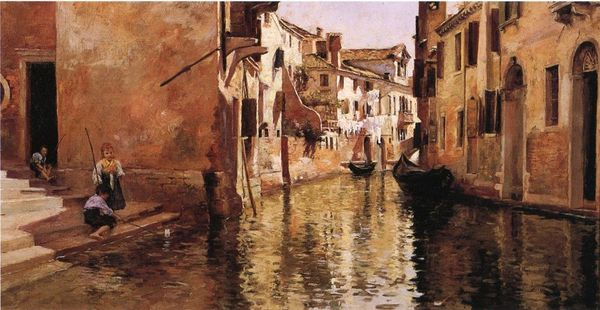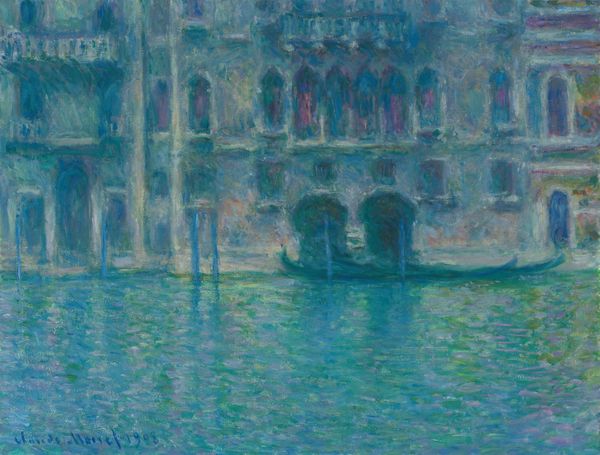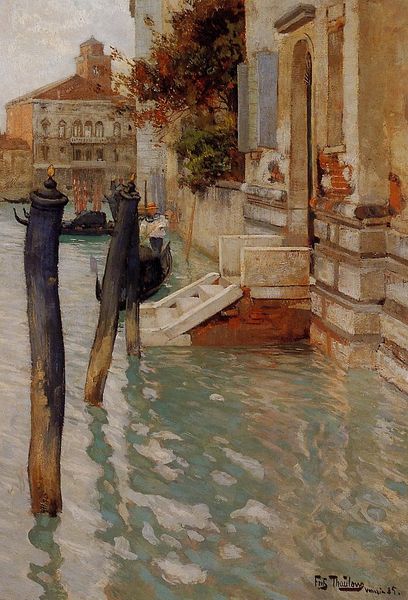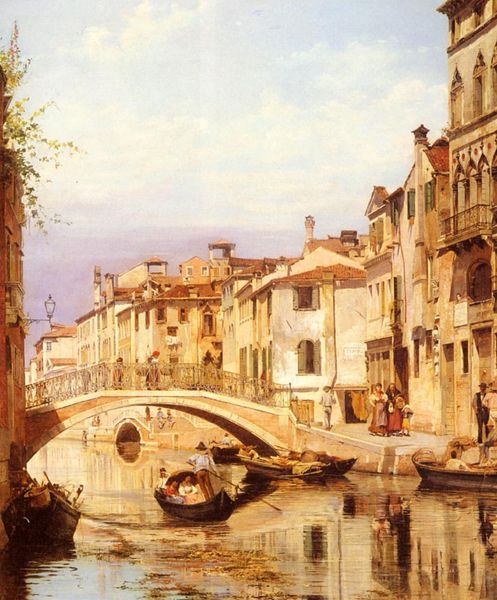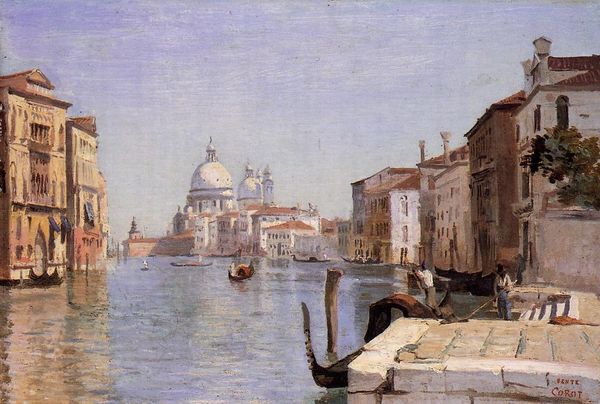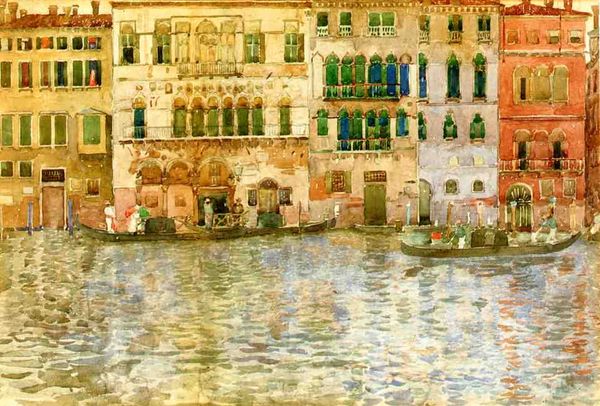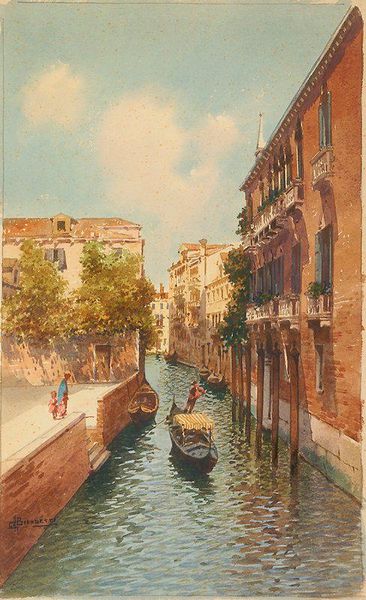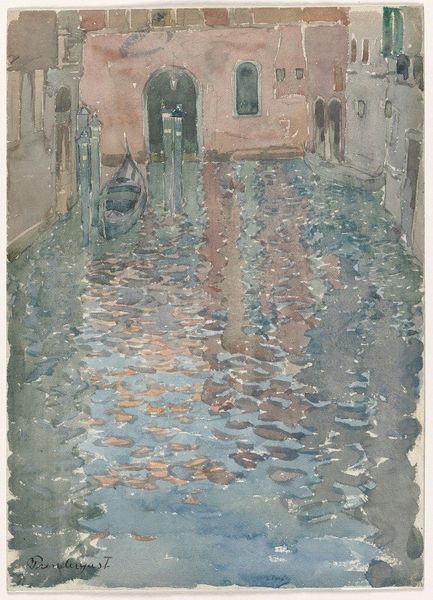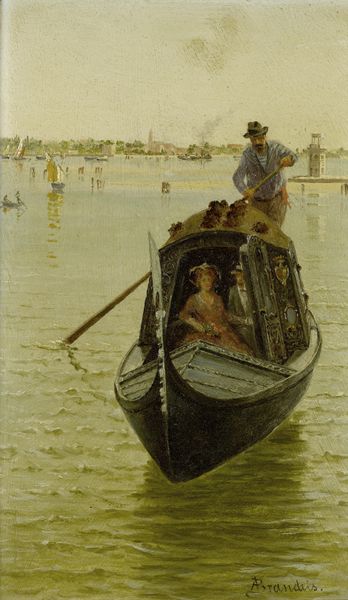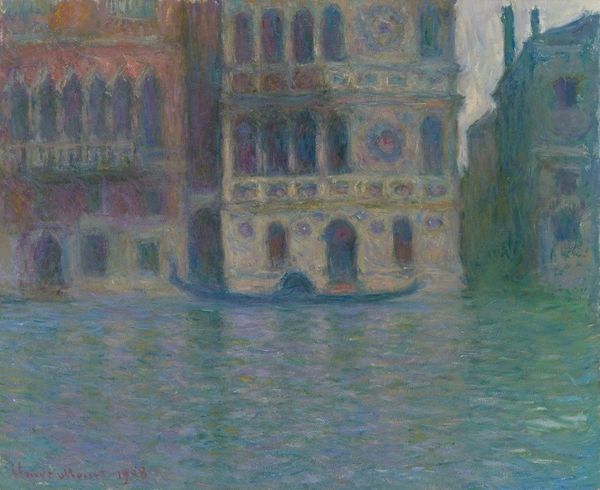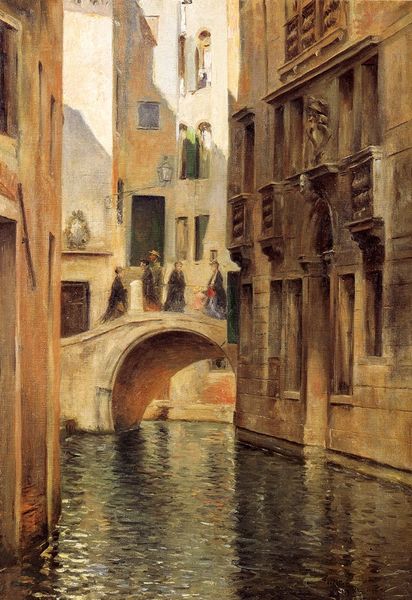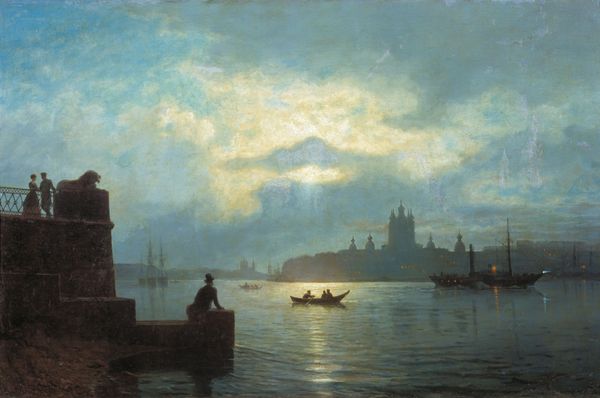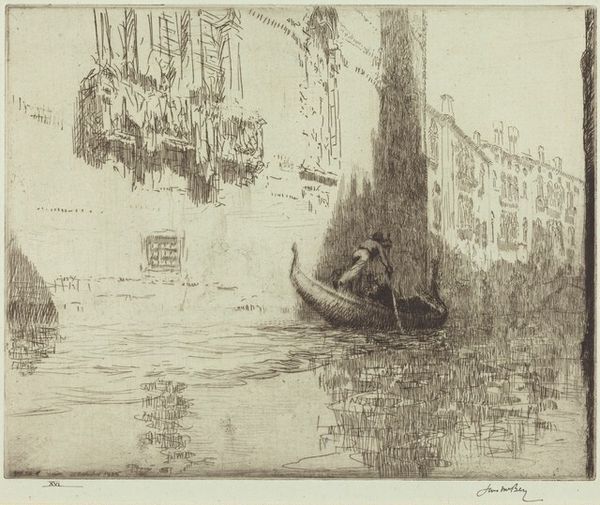
#
bloomsbury-group
Copyright: Public domain
Editor: So, here we have Roger Fry's "Venice," painted in 1899 using oil paint. There’s such a quiet stillness to it. The water almost feels like it’s holding its breath, reflecting these faded buildings. What do you see in this piece, particularly in the context of its time? Curator: It’s fascinating how Fry, despite being British, engages with a very specific and loaded artistic trope – Venice. Remember that Venice, as a subject, had become deeply enmeshed with artistic tourism and the rise of impressionism. Consider how artists were flocking there to capture its unique light and atmosphere. Fry positions himself within that history, yet also offers something different. Do you notice the subtle, almost muted palette? Editor: Yes, instead of the bright, almost garish colors associated with some Impressionist depictions of Venice, it’s…restrained. It's almost melancholy, don't you think? Curator: Exactly. He’s not simply replicating the visual spectacle, but arguably interrogating its myth. This restrained palette and the inclusion of everyday labor – look at the gondolier – bring Venice down to earth, disrupting the romanticized image perpetuated in popular culture. It's a quiet critique of the touristic gaze, if you will, and how Venice was being consumed and commodified as a picturesque ideal. It forces us to consider the socio-economic realities behind the pretty picture. What do you make of the gondolier’s placement within the frame? Editor: He's not centered, which de-emphasizes his prominence. It suggests Fry wasn’t interested in sensationalizing Venetian life. This piece is part of a wider commentary on the artistic construction of place. Curator: Precisely. He gives us a chance to understand how artistic trends and the art market create an appetite for images which can obscure or oversimplify a place's authentic history and social texture. Editor: This makes me realize how easily we accept images of iconic cities. We forget the layers of history and socio-political context they carry. Curator: Indeed. It invites us to reflect on the power of art in shaping our perceptions and responsibilities as viewers.
Comments
No comments
Be the first to comment and join the conversation on the ultimate creative platform.
